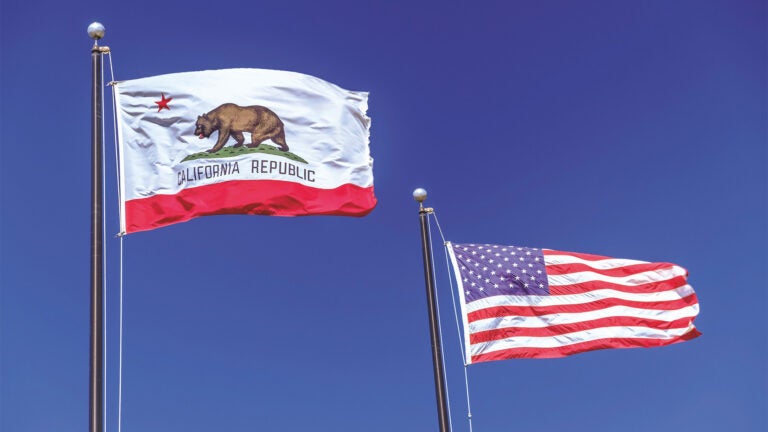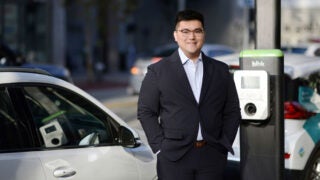
The Sept. 14 ballot asks voters whether to remove Gov. Gavin Newsom, and then to pick a replacement from a field of 46 candidates. (Photo/Pixabay)
Will Californians recall their governor? Election on Sept. 14 will decide
It’s just the second gubernatorial recall vote in state history; 18 years ago voters ousted Gray Davis and seated Arnold Schwarzenegger.
Californians will decide the fate of Gov. Gavin Newsom on Sept. 14, marking the second gubernatorial recall vote in state history: In 2003, voters seated Arnold Schwarzenegger and ousted Gray Davis.
The ballot asks voters whether to remove Newsom, and then it asks them to pick a single candidate from a broad field of 46 candidates to replace him. In an off-cycle election, many voters aren’t even aware that a recall election is taking place.
Republicans outnumber Democrats on the ballot by about 4 to 1. Under normal circumstances, they might not pose a threat in a Democrat-leaning state. But Newsom’s leading challenger is nano-sized and invisible to the naked eye.
None of the Republicans on the ballot can beat Gavin Newsom. But COVID-19 can.
Dan Schnur
“None of the Republicans on the ballot can beat Gavin Newsom. But COVID-19 can,” said Dan Schnur, an adjunct professor at the USC Annenberg School for Communication and Journalism. “The recall election wouldn’t be happening without the coronavirus.”
He pointed out that the recall was getting almost no attention or support until December 2020, when the pandemic worsened. Then, Newsom himself made what Schnur called a “disastrous” decision to attend a lobbyist’s birthday party in Napa at the upscale French Laundry restaurant while he was telling Californians to avoid public gatherings.
Schnur predicts that Newsom will probably survive the recall, given that more registered voters in California are Democrats (46%) than Republicans (24%). But, he said, as the COVID-19 delta variant has gotten worse, “so have the governor’s poll numbers.”
“Newsom must find a way to motivate the Democratic base to turn out for an election that doesn’t really interest them,” said Schnur, who leads the nonpartisan Voter Communication Task Force, which is working to ensure voters know how to register and vote in the California gubernatorial recall election. “That will be a lot easier if voters aren’t worried about another shutdown.”
Why state issues are missing from California gubernatorial recall messaging
Jennifer Cryer is an assistant professor of political science and international relations at the USC Dornsife College of Letters, Arts and Sciences and a panelist for the upcoming event, “To Recall or Not? Assessing the Campaign to Recall Gavin Newsom.”
“State elections tend not to focus primarily on national wedge issues and they don’t typically focus on national political figures without a local context,” Cryer said. “But in this instance, from all the messaging and outreach I’ve been seeing, the candidates really want to draw attention back to key national figures and to contentious national issues such as pandemic-related lockdowns and mask and vaccine mandates.”
The candidates really want to draw attention back to key national figures and to contentious national issues.
Jennifer Cryer
She explained that Republican candidates vying to replace Newsom, such as conservative talk show host Larry Elder, have focused on House Speaker Nancy Pelosi and the Biden administration in some social media campaign messaging. Meanwhile, one of the most talked-about advertisements on the Democrats’ “Vote No” side stars Sen. Elizabeth Warren of Massachusetts, who warns that “Trump Republicans” are “coming to grab power in California.”
The campaign messaging notably lacks a local or regional California context, said Cryer, and instead leverages polarized national issues. She said this explains why the most likely to participate in this off-cycle election are either very ardent Democrats or very ardent Republicans who vote in every election.
Will voters show up for California gubernatorial recall?
“The recall is all about turnout,” said Robert Shrum, director of the Center for the Political Future at USC Dornsife. “A majority clearly oppose it and Democrats are engaging in a media campaign and a ground game designed to motivate voting. It helps them that everyone is being mailed a ballot and it’s very easy to fill out.”
Shrum was referring to the fact that California has extended recent changes to its election laws — brought about by the pandemic — that require ballots to be mailed to all active registered voters through the end of 2021. While vote-by-mail doesn’t automatically help Democrats, there’s evidence that it increases turnout.
Shrum explained that Democrats’ strategy is a single, repeated message for the recall election: voting “no.” By avoiding any talk about the second question on the recall — the 46 potential replacement candidates — Democrats believe they are maximizing the impact of their messaging.
Many California voters or potential voters aren’t aware that the recall is coming up, what the choices are and what’s at stake.
Mindy Romero
With just weeks to go until the election, Newsom and Democratic supporters are ramping up efforts to motivate voters to turn in their ballots or head to the polls. Studies show that off-cycle elections tend to draw lower turnout.
“What’s concerning about the upcoming recall election is that many California voters or potential voters aren’t aware that the recall is coming up, what the choices are and what’s at stake,” said Mindy Romero, a political sociologist and director of the Center for Inclusive Democracy at the USC Price School of Public Policy. “This is likely even more true for historically underrepresented groups who often receive less information and outreach about elections.”
Romero, whose research focuses on political behavior and race/ethnicity and seeks to explain patterns of voting and political underrepresentation, said it’s critical to motivate voters to go to the polls and ensure an election that is “as representative as possible for all groups and communities in California.”



